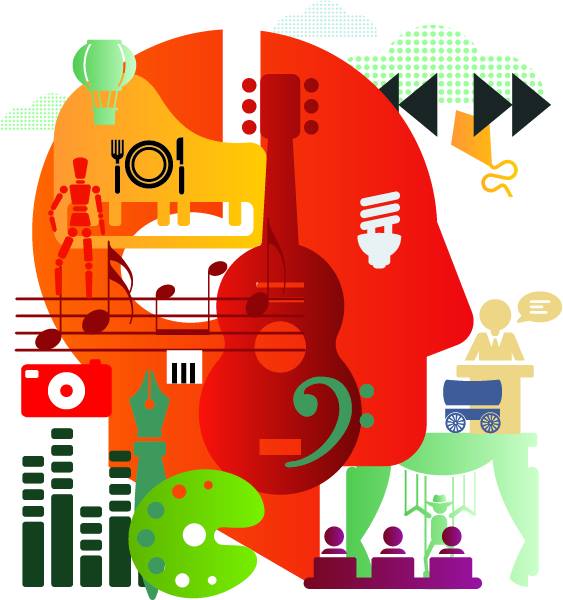Vitality is important to civic muscle because it provides the energy, resilience, and spirit that make sustained civic engagement possible. Just like a healthy body needs vitality to stay strong and active, a healthy community needs vitality to power its civic life.
Access to Healthy Food Stores
Grocery Stores, Rate per 100,000 Population by County, County Business Patterns, 2023
Median household income reflects the economic well-being of an average household and has far-reaching implications for the health, stability, and growth of a community. Changes in median household income over time can reveal widening or narrowing income inequality, which affects community vitality.
Access to Primary Care Physicians
Access to Primary Care Providers, Rate Per 100,000 Pop. by County, AHRF CHR 2021
Primary care physicians are often the most accessible form of healthcare for low-income, rural, and underserved communities. Communities with high access to primary care physicians typically have lower mortality rates, higher life expectancy, and better overall public health outcomes.
Access to Libraries
Library Access, Z-Score by County, County Health Rankings 2025
Access to libraries enhances economic vitality through services like job training, resume assistance, and financial education, which equip residents for employment and entrepreneurship. As community hubs, libraries promote social well-being, health information access, and civic engagement, strengthening interpersonal networks and collective problem-solving. Insufficient access correlates with lower educational attainment and economic stagnation, weakening the foundational resources for community progress.
On-Time Graduation Rates
On-Time Graduation, Rate by County, EDFacts 2022-2023
School performance correlates with strong parental involvement and community investment in education, leading to improved student attendance, behavior, and long-term academic success. Strong civic muscle drives high test performance by enabling resident advocacy for school funding, collaborative parental networks, and youth civic programs that enhance educational outcomes and social cohesion.
School Funding Adequacy
School Funding Adequacy, Gap in Dollars by County, SFID 2022
Adequate school funding enhances student outcomes, including higher test scores, graduation rates, and college attendance, which build a skilled workforce and drive long-term community economic vitality. Strong civic muscle secures funding adequacy by mobilizing parent advocacy, community coalitions, and policy campaigns that influence equitable resource allocation and legislative reforms.
Occupied Housing
Occupied (Not Vacant) Housing Units, Percent by County, ACS 2019-2023
High rates of occupied housing stabilize property values and reduce crime, supporting neighborhood cohesion and economic activity. Vacant properties contribute to urban blight, increased crime, and diminished tax revenues, exacerbating isolation and health risks. Strong civic muscle, through resident advocacy for anti-blight policies and collaborative maintenance efforts, sustains high occupancy levels and prevents the cascading effects of vacancies on communal well-being
Safe Neighborhoods
Missouri Department of Health and Senior Services, Missouri County-Level Study (CLS), 2022
Safe neighborhoods empower residents to interact freely, enjoy public spaces, and invest time in collective activities that build community spirit and resilience. This sense of security fosters optimism, encourages walking, biking, and casual encounters that spark social bonds and local pride. Conversely, feelings of insecurity—stemming from crime, poor lighting, or neglect—can result in fear and withdrawal, curtailing outdoor play for children, evening gatherings for families, and volunteer efforts.
Access to High Speed Internet
Percentage of Addresses Served by Broadband Internet (25/3+ MBPS) by County, FCC National Broadband Map, December, 2024
High-speed internet access is critical to community vitality because it enables people to participate in the growing digital economy and online society. Lack of access to high-speed internet can have negative impacts on a community’s health, economic development potential, and educational success.
Access to Childcare Centers
Child Care Centers, Rate per 1,000 population (under age 5) by County, HIFLD 2010-2022
Access to childcare centers supports parental employment and financial stability, enabling workforce participation that drives local economic growth and reduces poverty rates. This availability also creates jobs in the sector and stimulates community spending, fostering economic resilience and social cohesion. Limited access, however, leads to work disruptions, heightened family stress, and is a signal of reduced community involvement.
Access to Parks
Population With Park Access (Within 1/2 Mile) by County, CDC EPHTN 2020
Access to parks encourages physical activity and outdoor recreation, correlating with improved health outcomes, lower obesity rates, and enhanced mental well-being among residents. These spaces facilitate social interactions and community events, building trust and cohesion that bolster collective efficacy. Poor access restricts mobility and engagement, contributing to isolation, health disparities, and reduced environmental stewardship essential for sustained community vitality.
Language Arts Test Scores
Language Arts Test Scores, Grade 4, Percent Not Proficient by County, Ed Data Express 2021-22
School performance correlates with strong parental involvement and community investment in education, leading to improved student attendance, behavior, and long-term academic success. Strong civic muscle drives high test performance by enabling resident advocacy for school funding, collaborative parental networks, and youth civic programs that enhance educational outcomes and social cohesion.
Business Creation
Net Change in Number of Establishments, Rate Per 100 Establishments (Initial Year) by County, Census BDS 2019-2020
Business creation rates indicate economic vitality by generating jobs, spurring innovation, and increasing local revenues for public infrastructure. New businesses enhance market competition and consumer options, fostering adaptability to changing conditions. Low creation rates, often due to regulatory or financial barriers, lead to unemployment, underused properties, and reduced investment, perpetuating cycles of economic underperformance.
Employment Rate
Employment, Rate by County, BLS 2025
Employment rates reflect labor market strength, providing income stability that supports household spending, education access, and civic engagement. High rates signal skill-building and social integration, driving overall community advancement. Elevated unemployment can be associated with increased poverty, health issues, and reduced social capital.

Connecting Entrepreneurial Communities
Connecting Entrepreneurial Communities aims to create, connect, and promote community economic revitalization through entrepreneurship as a driver for economic growth across communities in Missouri.

Strategic Doing for Thriving Communities
This one-day program guides communities through exploring community economic development opportunities they have and taking them through a planning process that leads to a goal-oriented plan.
Show Me Neighborhood Art Week
This outreach effort by University of Missouri Extension and Creating Whole Communities seeks to empower public art made by residents as a contribution to the area’s sense of place where they live.
Public Board Training
Public Boards Training supports appointed public board members to understand roles and responsibilities
Building Healthy Communities ECHO
Building Healthy Communities ECHO provides a shared learning and relationship-building opportunity for communities to work collaboratively for optimal health and well-being.
Childcare as Community Economic Development
Connecting the dots across all pieces of MU Extension (and the University of Missouri) to better understand the services, programs and resources that are offered related to early childhood, economic development, and community development, and linking communities across Missouri to those services, programs and resources.

Community Arts Program
The Community Arts Program is a three-way partnership between MU Extension, the University of Missouri, and Missouri communities to promote and foster arts-based community and economic development.
Missouri EATs
In partnership with communities across the state, Missouri EATs helps connect local stakeholders to build and strengthen their community’s food system. Missouri EATs is a community development process designed to engage people and help them develop a plan to act in order to make lasting changes to transform their local food system.
Data Training
Demographic, Economic and Workforce Data Training gives your team fundamental skills in public information data collection, analysis and visualization.
Voluntary Income Tax Assistance (VITA)
VITA helps individuals complete their income tax returns
Nonprofit Technical Assistance
MU Extension Non Profit Technical Assistance Team provides one-on-one technical assistance mini-sessions for small nonprofit organizations, Nonprofit leader skill-building courses, a resource library with informational resource sheets, and referrals to other programs, services, and organizations
